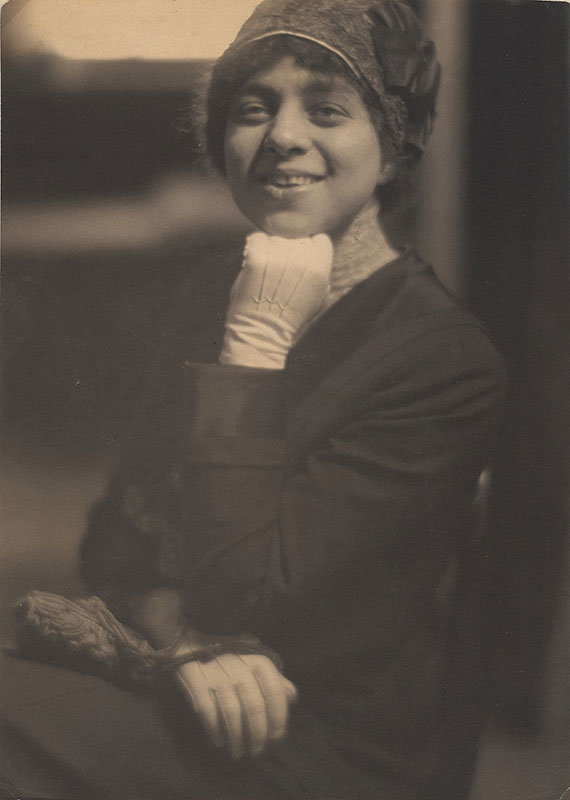Listen to actor Andi Bohs read a quote by Belle Greene and co-curator Philip Palmer discuss Greene’s identity as a librarian.

Clarence H. White (1871–1925)
Belle da Costa Greene, 1911
Platinum print
Princeton University Art Museum, The Clarence H. White Collection, assembled and organized by Professor Clarence H. White Jr., and given in memory of Lewis F. White, Dr. Maynard P. White Sr., and Clarence H. White Jr., the sons of Clarence H. White Sr. and Jane Felix White; x1983-447
ANDI: My friends in England suggest that I be called “Keeper of Printed Books and Manuscripts” . . . but you know they have such long titles in London. I’m simply a librarian.
PHILIP: Through all of her shifts in circumstance and self-transformations, “librarian” is the word that most consistently defined Belle da Costa Greene’s identity. It was in her family’s DNA: her father, Richard T. Greener, after becoming the first Black student to graduate from Harvard College, became a librarian and professor at the University of South Carolina before the collapse of Reconstruction in 1877. When she applied to the Northfield Seminary for Young Ladies in 1896, she indicated on her application that she “would like to fit for Librarian.” Her first appearance as the head of household in a New York City directory, in 1912, lists her under “Green” as “Bella librarian.” For most of her career her signature and sign off in business letters read, “Belle da Costa Greene Librarian.” After Greene’s death, the book collector Anne Lyon Haight began writing an account of her good friend’s life, drawing on unpublished letters and interviews with people who knew her. Her working title? “The Training of a Librarian.”
But even a passing familiarity with Belle da Costa Greene’s life and career shows that her “simply a librarian” quote is a massive understatement. This was a librarian who spent fortunes at rare book auctions and commanded respect from prominent European curators. This was a librarian regularly featured in newspaper articles on the best-paid women in America, someone who collected fine art and Chinese sculpture. This was a librarian who drove a convertible and cavorted with aristocrats, who dined with avant-garde artists and parodied Gertrude Stein. This was a librarian, in other words, with verve and style uniquely her own.
Though Belle Greene ensured that much of her personal life and thoughts would remain unknowable—she burned her papers before her death—the archival legacy she left behind as a librarian and cultural heritage professional gives us a wealth of information about who she was and what she valued. Her love of art and the written word became the foundation of her professional identity, driving a strong commitment to collection access through research and exhibition programs. For Greene, a book was, as her bookplate suggests, “a friend who never changes.” She ensured that thousands of visitors to the Morgan would also have transformative experiences with books at the institution she often called “her” library.
